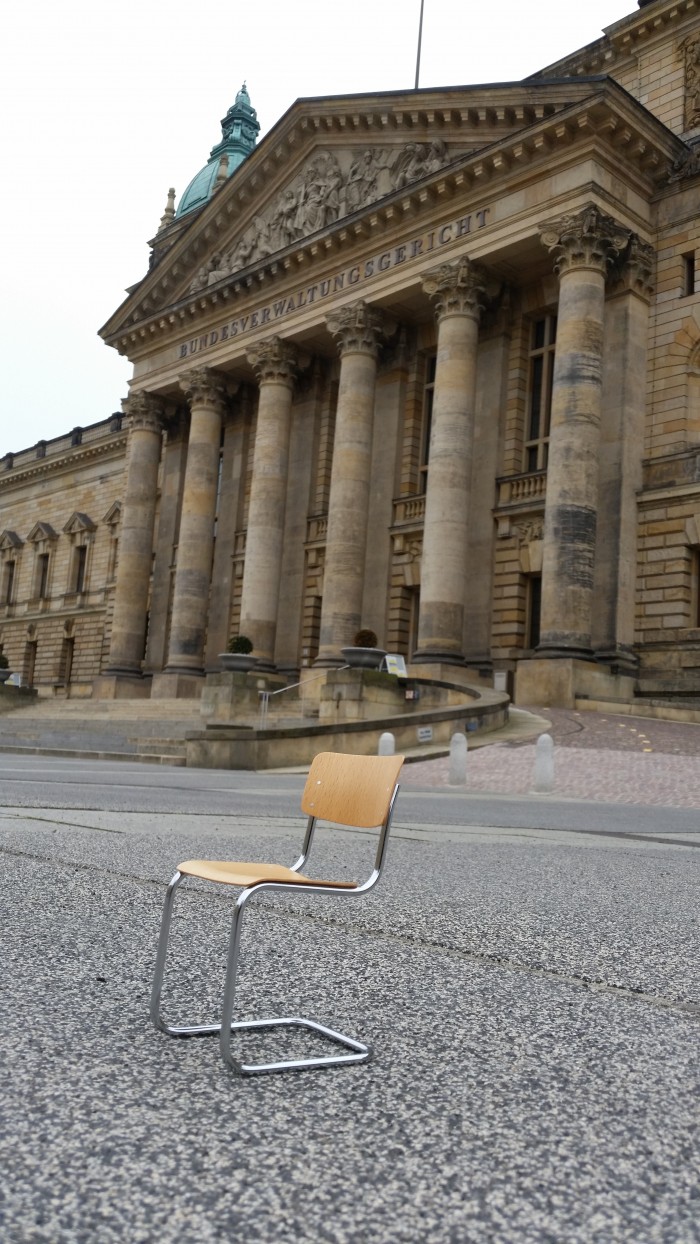"...the strict, logical lines which avoid anything unnecessary and which with the sleekest form and through the simplest means embodies the modern objectivity", with this, glowing, description of his design the Supreme Court of the German Reich in Leipzig awarded on June 1st 1932 Mart Stam the artistic copyright of the cubic, quadratic, cantilever chair, and thus settled arguably the very first legal dispute over the copyright of the form of a piece of furniture intended for industrial mass production.
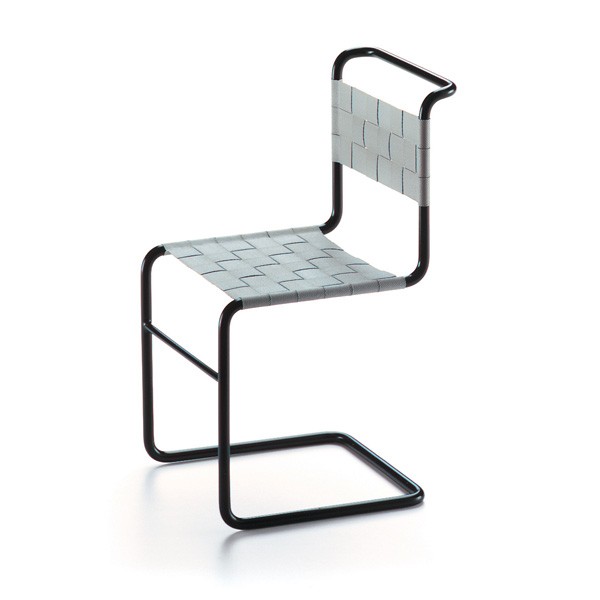
The story begins in Dessau in the mid 1920s and the development of tubular steel furniture, a process in which Marcel Breuer unquestionably played a major, if not the major, role. Aware of the commercial possibilities of the genre Marcel Breuer established in late 1926/early 1927 the company Standard-Möbel in Berlin with fellow Magyar Kálmán Lengyel, the first dedicated manufacturer of tubular steel furniture.
In early 1928 Standard-Möbel came to an agreement with a certain Anton Lorenz that he would manufacture the company's chairs and assume the position of general manager. Anton Lorenz was, somewhat inevitably, also of Hungarian origin, and had moved to Germany in 1919 when his opera singer wife took up a position in Leipzig. Although according to the popular Lorenz biography he had been a history and geography teacher in Budapest, in Leipzig he established himself as a locksmith before subsequently relocating his business to Berlin. Shortly after taking over at Standard-Möbel Lorenz persuaded Breuer to transfer the rights to his furniture to Standard-Möbel.
In July 1928 Marcel Breuer began cooperating with Thonet , by January 1929 Thonet were marketing the first Breuer works, and in the course of that year the first Thonet tubular steel furniture catalogue was published, a catalogue featuring exclusively Breuer's designs. Thus in early 1929 one had a situation in which both Standard-Möbel and Thonet were selling Breuer tubular steel furniture. Albeit different designs. Consequently, and in what must be considered the only logical option, in April 1929 the successful and globally active manufacturer Thonet bought the small, struggling Berlin manufacturer Standard-Möbel and thus secured the rights to all Breuer's tubular steel designs, giving them what Mathias Remmele refers to as "the world's largest and most diverse range of tubular steel furniture"
And that is where the story really should end.
But it doesn't.
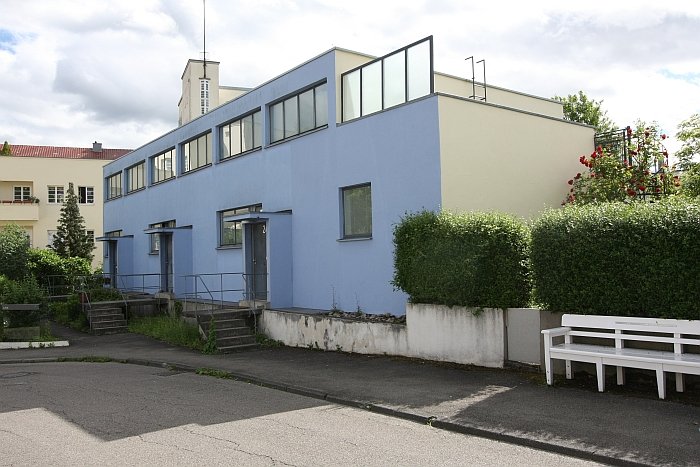
Shortly before the sale of Standard-Möbel to Thonet Anton Lorenz registered patents for his own tubular steel chair designs and also secured the rights to all Mart Stam's cantilever chair designs: Stam having famously presented his first cantilever chair design as part of the 1927 Weissenhofsiedlung exhibition in Stuttgart, since when it had had no producer. Anton Lorenz was however of the opinion that the cantilever represented the future of chair design and having failed to come to an agreement with Mies van der Rohe concerning his, equally at Weissenhof premièred, cantilever, Lorenz approached Stam.
According to Otakar Máčel, in the contract between Stam and Lorenz the latter received "the sole and exclusive rights to produce, allow to be produced, to distribute and make commercially available the cited "invented objects", and following the sale of Standard-Möbel Anton Lorenz established the company DESTA as a vehicle to achieve just that.
In addition, Lorenz was in possession of four prototypes which although built in Standard-Möbel's workshops, he hadn't handed over to Thonet with the rest of the Standard-Möbel inventory; Lorenz arguing that they related to his patent and the contract with Stam and thus were not part of the Standard-Möbel deal. Something Thonet blithely, if not naively, accepted.
Sadly the mists of time have closed in to shroud the exact dates of when what subsequently occurred, but in essence, in 1929 Thonet released the model B 33 and B 34 cantilever chairs by Marcel Breuer, his first cantilever chairs, and works which bare a formal similarity to Mart Stam's Weissenhof cantilever chair; and in 1929 DESTA released the ST 12 and SS 32, both variations on Mart Stam's 1927 Weissenhof cantilever chair and related to the aforementioned prototypes.
The B 33 and ST 12 are essentially the same chair. The B 34 and SS 32 are essentially the same chair.
Lorenz sued Thonet for copyright violations.
In April 1930 the 16th Civil Chamber of Berlin County Court decided in Lorenz's fvaour, Thonet appealed and in April 1931 the 10th Civil Chamber of Berlin County Court rejected the appeal. Thonet appealed, and on June 1st 1932 came the final decision of the 1st Civil Chamber of the Supreme Court of the German Reich in Leipzig in favour of Lorenz
In essence there were two disputes.
In terms of the B 34 and the SS 32 the dispute involved a technical construction which Lorenz had developed and patented in 1929. In the interests of space we'll leave that story here. Save to say, Lorenz won.
In terms of the B 33 and the ST 12 the question was the form, that which Alexander von Vegesack refers to as the "Gradlinigkeit der Form und den Kubismus"- the linearity of the form and its cubism - that rigid quadratic form we all know.
Lorenz's argument was that as a work of creativity the form of the cubic cantilever which Stam had developed for his Weissenhof chair, and on which Breuer's B 33 was clearly based, was protected by the 1907 Kunst-Urhebergesetz, [Artistic Copyright Law], KUG. According to Sebastian Neurauter the 1907 KUG covered "not only the typical manifestations of the high arts, so paintings and sculptures, but also objects of the decorative arts", including works of architecture and appled arts. This addition of architecture and "design" works representing an extension of the scope of the act in comparison to the previous version from 1876. And thus is an obvious indication of the importance already attached to architecture and decorative arts at the beginning of the 20th century. It's all too easy to think Art Nouveau and Art Deco just concerned the, relatively few, artists involved, but clearly the politicians, lawyers and businessmen were also heavily involved. And were actively shaping laws to reflect the new/coming reality.
Not that everyone appeared to have grasped that.
As Neurauter notes, Lorenz's use of the KUG stood in direct contrast to Bauhaus who made no use of the law in respect of their workshops' products; Lorenz, so Neurauter, should have been an excellent example for Bauhaus in such respects. He was about to demonstrate why.
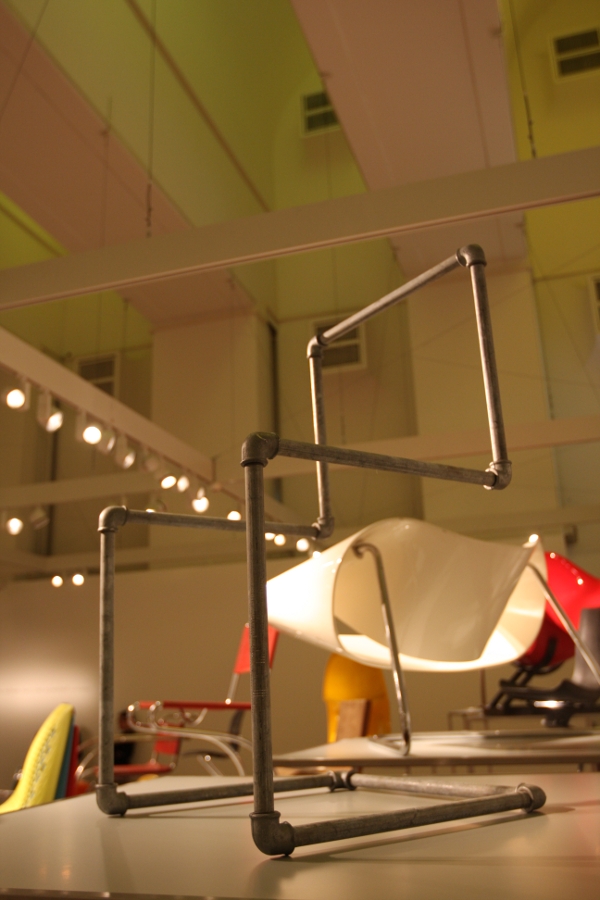
The decision to sue on the basis of artistic copyright rather than a technical patent almost certainly has its origins in the number of patents for various forms of cantilever chairs which existed at that period. Proving technical originality could have been difficult. But, and more importantly, Stam hadn't actually developed anything technical. Just bent a piece of steel tubing of appropriate thickness in appropriate places. Stam's cantilever chair is a classic example of a design process, of taking a material, a concept and developing something through the intelligent combination of the two. Stam designed something, he didn't invented anything. Or as the Supreme Court phrases it: "Mart St... [in the court publication all names apart from Marcel Breuer's are redacted] has created with this chair an independent, idiosyncratic, creation. There is no technical necessity which prescribes an object of tubular steel furniture such a specific form. For the construction of a chair from tubular steel, many possibilities are conceivable" - the decisive in the chair is the form, and while it may have followed function it didn't follow material necessity, rather Stam's understanding of design.
In addition, and in a remarkable demonstration of an openness for and understanding of contemporary culture that we would never have assumed a German court would or could posses in 1932, they noted that, "at present an art form is considered as being especially valuable, which presents its purpose in a very clear, simple form. For a product of the arts and crafts it corresponds that an object of daily life is given an aesthetic form which is pleasing on the eye."
Further the court rejected as wholly irrelevant the Thonet defence that the two chairs were of different materials and also a submission on behalf of Breuer by Walter Gropius that Mart Stam's Weissenhof cantilever was simply a further development of Marcel Breuer's, non-cantilever, B 5, "St..'s chair represents at most a free interpretation of Breuer's models, in the course of which an idiosyncratic creation was realised.", so the court, continuing, "Mart St.. has thus acquired for his chair as a handicraft product an artistic copyright". Later the court would rub some salt into the wound with the assertion that "In artistic development the way from Breuer's model B 5 to the defendant's model B 33 leads over Mart St...'s chair". Or put another way - without Mart Stam Marcel Breuer wouldn't have been in a position to develop his B 5 into the B 33.
That's gonna hurt.
What the court, and obviously Thonet's lawyers, didn't consider was the very clear difference between the B 33 and ST 12: although very, very, similar, and both clearly a further development of Stam's Weissenhofsiedlung chair, with the DESTA ST 12 the backrest is angled slightly backwards, running in a straight line, the backrest of the Thonet B 33 is angled slightly backwards, but has a "knick", and thus, theoretically, a higher level of seating comfort. Otakar Máčel argues that such would have made no difference, the case being about similarities with Stam's original work not directly between the ST 12 and B 33. With all respect to Otakar Máčel, we beg to differ, and consider that the formal development of the backrest through the "knick" is a design development in its own right. And with all respect to Thonet's 1930s lawyers, we see it as little more important than the "nickel plated tubes" argument with which they hoped to win.
They didn't, and the outcome of the case was not only that Mart Sam was formally credited with the artistic copyright of the cubic cantilever chair, and thus became the first designer of the modern period to be awarded "ownership" of a form rather than a technical innovation, but owing to his contract with Stam Anton Lorenz was awarded the rights to those cubic cantilever chairs designed by Breuer.
Thus giving Anton Lorenz a monopoly position as regards cubic cantilever chairs.
A month after the judgement Anton Lorenz licensed his newly acquired rights exclusively to Thonet. Which you kind of get the impression was his intention all along. Much like with today's hip young Start Ups, one has the unmistakable feeling that Anton Lorenz's motivation was the well paid "exit"
And that is where the story really should end.
But it doesn't.
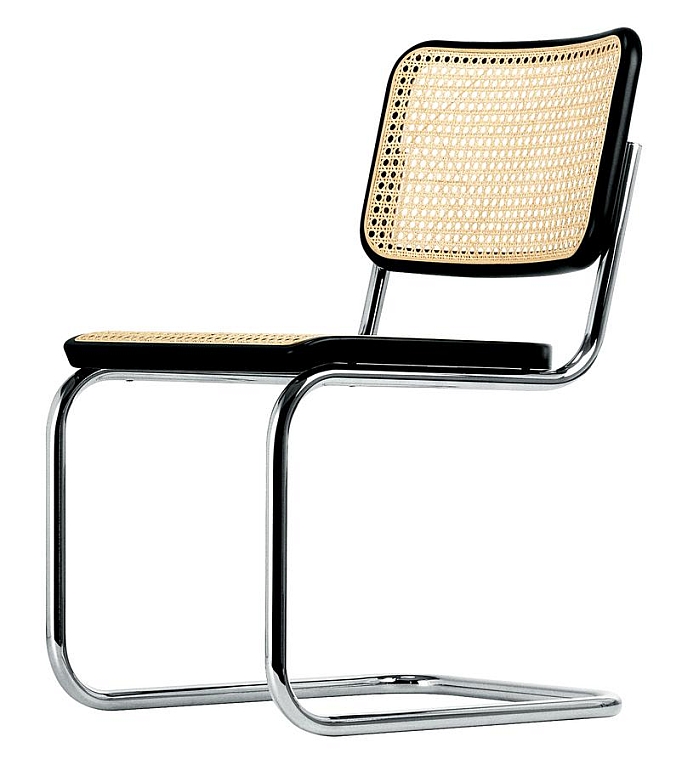
In addition to licensing the DESTA and the Stam rights to Thonet, and in a truly epically, grotesque, textbook, example of poacher turning gamekeeper, in July 1932 Anton Lorenz was appointed head of Thonet's, we presume newly formed, "Abteilung für Gewerblichen Rechtsschutz" - Department for the Protection of Commercial Right- a position he held until 1935 and from which he vigorously and consequently oversaw the protection of Thonet's rights, which were of course in effect his rights, and thus played a key role in helping strengthen Thonet's position and reputation in and with tubular steel furniture.
And that is where the story really should end.
And does.
Except for the unanswered questions.
The biggest and most important of which for us is who designed the DESTA ST 12? The chair which, effectively, started the process, a process which somewhat paradoxically was actually about Stam's 1927 cantilever and in which the ST 12 played only a cursory role. We can't find any evidence that Stam himself developed the ST 12, Remmele considers it unlikely that Breuer was involved, Wilk in contrast sees the B 33, and so by extrapolation the ST 12, as "deriving logically from Breuer's earlier work", Máčel goes further and opines that the ST 12 was "probably the work of Breuer or Lorenz". But if Breuer was involved, why does he appear to have remained silent in court? Where are the sketches and plans? And if Breuer wasn't involved with the ST 12. Was he aware of it? The question is important because on account of the backwards leaning backrest the chair represents a clear break with the strict geometry of Mart Stam's earlier work. It's still quadratic, but makes a concession to sitting comfort. The B 33, as already noted, even more so. The answer to the question may have played no role in the case, but is important for completing the (hi)story of post-war chair design.
Despite the central role Mart Stam's Weissenhof cantilever chair played in the proceedings and thus in the (hi)story of contemporary furniture design it was never really produced and marketed. For all its aesthetic elegance, formal innovation and cultural relevance it was a very rigid piece of work, cumbersome to produce and by all accounts very uncomfortable. Thus today it is survived by more technologically advanced, arguably more elegant and certainly more comfortable works such as Mart Stam's S 43, or Marcel Breuer's S 32.
What does remain however is the leading position in terms of steel tube cantilever chairs, and tubular steel furniture in general, which Thonet acquired through the process. A position which is arguably justified. In the late 1920s there were numerous companies producing tubular steel furniture - a great irony of the period is that although the Weissenhofsiedlung marked a high-water mark in the public acceptance of tubular steel furniture, and presented works by several manufacturers, Thonet were represented with their bentwood furniture, and doubly ironically most famously thanks to the Grand Modernist Le Corbusier who used Thonet wooden chairs for his interiors - however Thonet were the first company to invest heavily in the necessary machines and infrastructure, both in Germany and France, and the first to hire a designer of Breuer's talents to complete a collection and this all despite, as Mathias Remmele notes, the "initiative was comparatively risky because there were no relevant market for this type of furniture, and none which could guarantee a speedy profit". Thonet took a huge chance on tubular steel furniture. And it worked out. Even if some dilettantish legal work meant it cost them a lot more time and money that it really should have......
